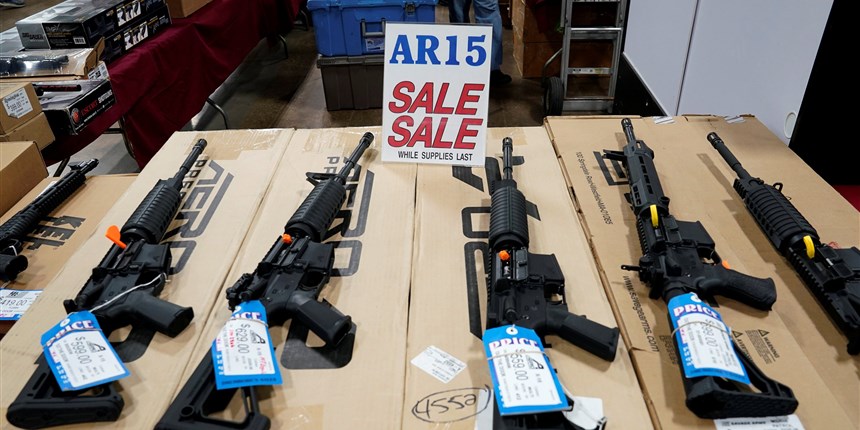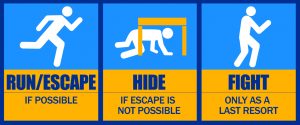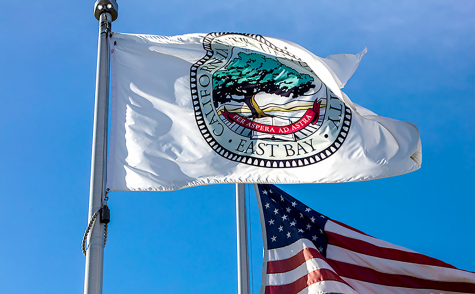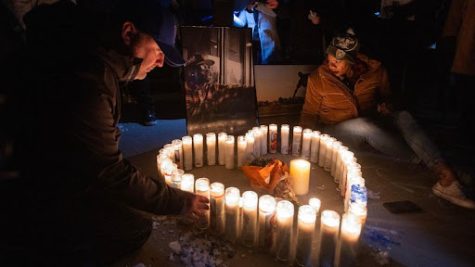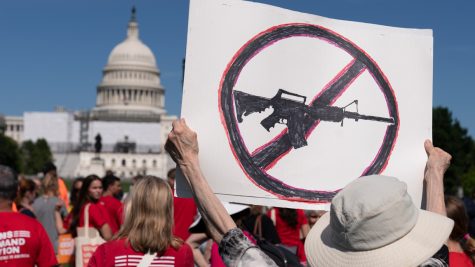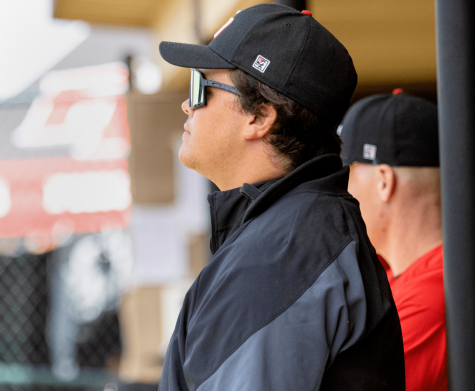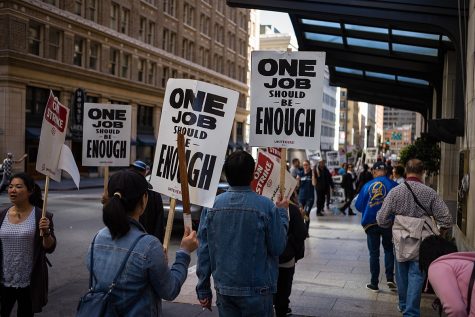Gun regulations should progress to policy
From a young age, I started to notice and pick up on some things that not only confused me, but made me feel a way that I didn’t understand. I would walk into a room, and see my parents standing in front of the TV with these looks on their faces that I had never seen before. As I would glance at the screen, I would see flashing red and blue lights and tears streaming down people’s faces.
What happened? What was so bad that would cause my parents — my superheroes and the people who never showed fear — to break? I had so many questions and thoughts that day running through my mind, and to this day I still have no answers. One thing I knew for sure though was that something was not right and needed to be fixed.
That something is guns. If only it were that simple.
It has been our right as Americans, bestowed on us by our founding fathers, to bear arms. I don’t argue that fact, and I wouldn’t want to take that constitutional right away. However, there is absolutely no need for semi-auto and automatic weapons and the Federal Assault Weapons Ban (AWB) should be renewed.
The AR-15 is a semi-automatic weapon and is the most powerful rifle sold in the U.S. today. It is becoming more common to find these guns used in other deadly shootings, including the ones at Sandy Hook Elementary School, Columbine High, Virginia Tech and most recently Marjory Stoneman Douglas High School in Parkland, Fla.
According to the NY Times, it has been estimated that at least 3.3 million AR-15 rifles were sold in the United States between 1986 and 2009. These semi-automatic guns fire one round each time the trigger is pulled which is between 45 and 60 rounds per minute depending on the skill of the operator. This rate of fire is comparable to other semi-automatic firearms, but is even more comparable to fully automatic assault rifles. Some of which can fire more than 1,000 rounds per minute.
Typically, these types of guns are commonly used in hunting and other sports, but the sole purpose of this gun being created was to kill large numbers of people in a short period of time. How that correlates to a hobby, I don’t know.
In 1993, the Federal Assault Weapons Ban (AWB) was introduced in Congress and would ban the sale of new assault weapons to American civilians. Assault rifles were already banned, and an outright ban on semi-automatic firearms would never pass. The AWB defined assault weapons as semi-automatic firearms that shared too many cosmetic features with their fully automatic counterparts. The AWB also banned magazines having a capacity higher than ten rounds.
On Sept. 13, 1994 the Federal Assault Weapons Ban went into effect. A Washington Post editorial was published two days later, responding to the AWB stating, “No one should have any illusions about what was accomplished [by the ban]. Assault weapons play a part in only a small percentage of crime. The provision is mainly symbolic; its virtue will be if it turns out to be, as hoped, a stepping stone to broader gun control.”
With the AWB now in place, manufacturers began redesigning firearms and magazines that were compliant with the new standards. One of the new guns that satisfied the regulations was the Hi-Point 995 which was sold with ten-round magazines. In 1999, the Columbine High School massacre occurred. One of the shooters, Eric Harris, was armed with a Hi-Point 995.
In 2004, the Federal Assault Weapons Ban expired and was not renewed. The AWB had failed to have an impact on gun crimes in the United States, and a 2004 Department of Justice report concluded, “Should it be renewed, the ban’s effects on gun violence are likely to be small at best and perhaps too small for reliable measurement. [Assault weapons] were rarely used in gun crimes even before the ban.”
Regarding large capacity magazines the study stated, “It is not clear how often the outcomes of gun attacks depend on the ability of offenders to fire more than ten shots (the current magazine capacity limit) without reloading.”
At Virginia Tech in 2007, Seung-Hui Cho brought attention to gun regulations. Specifically, the regulation of magazine capacity when he carried 19 magazines, and some containing 10 and 15 rounds in his backpack as part of a premeditated slaughter. I think it is pretty clear that this act of evil was dependent on the ability to fire more than ten shots without reloading.
I think it’s time for policy makers to wake up. How many more examples of mass shootings do we need to have in order to see change? Is it not sickening to continue to turn on the news, and hear about 14 and 15 year old children dying at a place of trust? It is better to take small steps in the right direction than to take none at all because those little steps form progress that can develop into policy overtime. The question isn’t whether the AWB works, because we know that it does, but the real question is are we willing to give it another shot knowing that it may take time and money?


